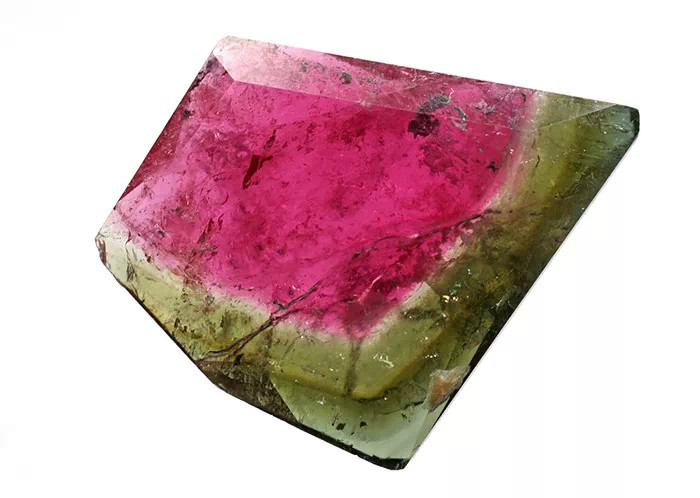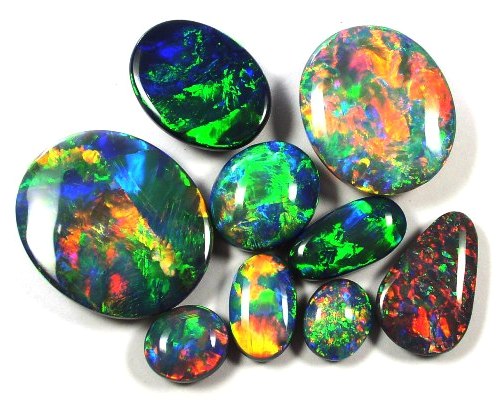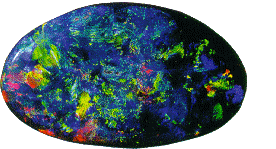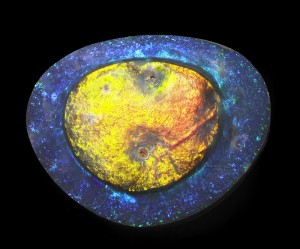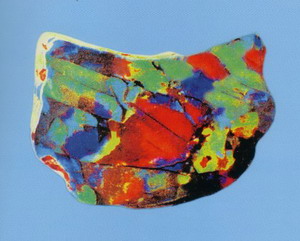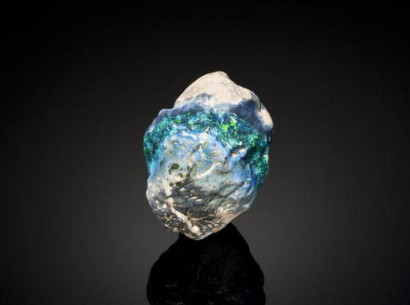The Colors of October Birthstones
October birthstones – Tourmaline and Opal – two of the most colorful gems in the world.
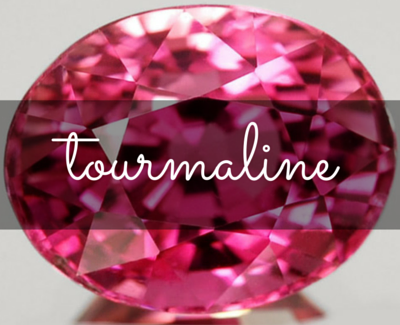 |
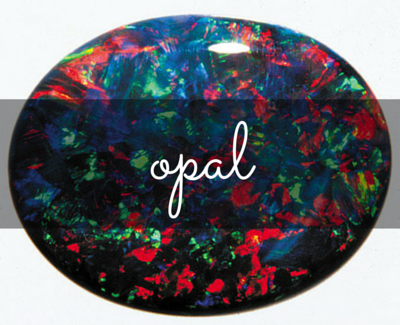 |
TOURMALINES
Available in a spectrum of colors and color combinations, Tourmaline lives up to its name, which means “mixed stone.” Ancient legend says that it is found in all colors because it traveled along a rainbow and gathered all the rainbow’s colors.
It is a gemstone that exhibits the broadest spectrum of gemstone colors. People have used gem-quality forms of this mineral for centuries; but before the development of modern mineralogy, this gem has been misidentified as rubies, emeralds and sapphires. In fact, a famous Tourmaline – the size of a pigeon’s egg, belonging to the Russian Empress Catherine the Great – was long thought to be a ruby.
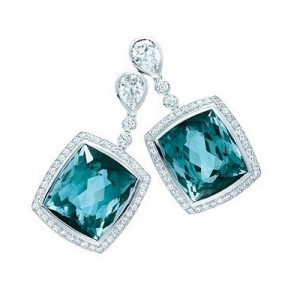 Tourmaline has made its way into the commercial gem industry in 1876 when George Kunz sold a green Tourmaline gem to the famous Tiffany and Co. In the ensuing years, it gained great popularity as a gemstone. It has become a favorite gemstone among jewelry designer and gem collectors all over the world. Since it is available in a wide variety of colors, it is ideally suited to almost anyone’s taste.
Tourmaline has made its way into the commercial gem industry in 1876 when George Kunz sold a green Tourmaline gem to the famous Tiffany and Co. In the ensuing years, it gained great popularity as a gemstone. It has become a favorite gemstone among jewelry designer and gem collectors all over the world. Since it is available in a wide variety of colors, it is ideally suited to almost anyone’s taste.
The color variety of a Tourmaline is being displayed all at once in one gemstone – it may be bi-color, tri-color or multi-color gems. They are formed in many combinations and are highly prized.
One very popular multi-color variety is known as Watermelon Tourmaline, resembling its namesake, the gemstone is cut into thin slices having a pink center, white ring, and green edge.
With a rainbow of colors, Tourmaline can easily enhance any jewelry collection. Some of the most expensive Tourmalines are the Cat’s Eye Tourmaline, Chrome Tourmaline, Blue Indicolite, Paraiba Tourmaline and Rubellite Tourmaline.
Cat’s Eye Tourmaline which exhibits a “cat’s eye” effect similar to what is commonly seen in tiger’s eye cabochons. Chrome Tourmaline is colored by chromium resulting in a beautiful green stone that is often confused with emerald or the tsavorite garnet. Indicolite is a dark blueish black stone. The Paraiba Tourmaline is a bright neon-blue and Rubellite is a deep reddish purple stone.
Apart from being used as an ornament in jewelry, Tourmaline was also used in the realm of science. Because of the stone’s unusual property, when it is warmed or rubbed, it attracts small bits of paper, lint and ash. This occurs because the gem becomes charged with static electricity. Benjamin Franklin once used this gem in his studies of electricity.
Tourmalines are mined everywhere in the world including Africa, Afghanistan, Africa, Australia, Brazil, Kenya, Madagascar, Mozambique, Nigeria, Pakistan, Siberia, Sri Lanka, Tanzania, the USA, and Zimbabwe.
Tourmalines are believed to strengthen the body and spirit, especially the nervous system; and are also thought to inspire creativity. They are also known as the “peace stone,” believed to dispel fear and make its wearer calm.
OPALS
The name Opal derives from the Sanskrit upala – which means “precious stone,” the Latin opalus and the Greek opallios which both mean “to see a color change”. In ancient times, it was known as the Queen of Gems because it encompassed the colors of all other gems.
This kaleidoscopic gem encompassed the red of ruby, the green of emerald, the yellow of topaz, the blue of sapphire, and the purple of amethyst. An Opal’s beauty is the product of contrast between its color play and its background – and it ranges from milky white to black with flashes of yellow, orange, green, red, and blue.
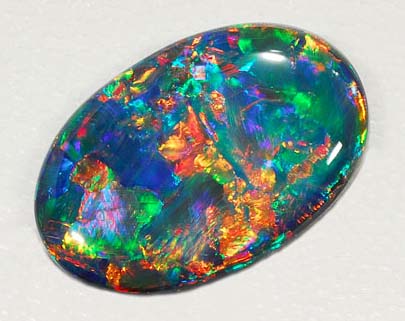 Many cultures have credited Opal with supernatural origins and powers. Arabic legends say it falls from the heavens in flashes of lightning. The ancient Greeks believed Opals gave their owners the gift of prophecy and guarded them from disease. Europeans have long considered the gem a symbol of hope, purity, and truth. And in ancient Rome, this gem symbolized love and hope, thus having the name synonymous with “precious stone.”
Many cultures have credited Opal with supernatural origins and powers. Arabic legends say it falls from the heavens in flashes of lightning. The ancient Greeks believed Opals gave their owners the gift of prophecy and guarded them from disease. Europeans have long considered the gem a symbol of hope, purity, and truth. And in ancient Rome, this gem symbolized love and hope, thus having the name synonymous with “precious stone.”
Some people also believed it’s an unlucky gem. But that particular superstition comes from a novel written in the 1800s (Anne of Geierstein by Sir Walter Scott), and not from any ancient belief or experience.
Aside from different beliefs, Opal has captured many because of its beauty – writers have compared the gem to volcanoes, galaxies, and fireworks. Admirers gave extraordinary Opals poetic names like Pandora, Light of the World, and Empress. In the era of Art Deco, the Opals experienced their flourishing, with contemporary gemstone artists preferring them over all other stones because of their subdued charm. And here are some of the most famous Opals in history:
Aurora Australis
Found in 1938 and is considered the world’s most valuable Black Opal; the oval, cut and polished stone has a harlequin pattern with dominant red, green and blue colors against a black background and is named after the bright southern lights in the night sky.
Fire Queen
Formerly known as the “Dunstan’s Stone” named after its owner, Charlie Dunstan; it was the largest nobby to date – alive with color and a marvelous gem, too beautiful for words. However, back in the 1900s, when Opals were not much popular, Dunstan sold it for a paltry $150 to an unknown buyer and the story goes that Dunstan got drunk and “lost” two other big stones, and was later found dead in his home from a gunshot wound to the head, he had committed suicide.
Pride of Australia
Also known as the ‘Red Emperor’; it was found in 1915 and is shaped like the continent. The Opal has black and blue veins interlaced with brilliant red streaks and was tagged as “the greatest Opal of Australia, and therefore the greatest Opal in the world.”
Olympic Australis
Reported to be the largest and most valuable Opal ever found; it was found in 1956 at the famous “Eight Mile” Opal field in South Australia. It was named in honor of the Olympic Games, which were being held in Melbourne at the time.
Halley’s Comet
Recorded in the Guinness Book of Records as the world’s largest uncut Black Opal nobby; it was found by a group of Opal miners known as “The Lunatic Hill Syndicate” about the time “Halley’s Comet” appeared in Australian skies.
Each Opal is truly one-of-a-kind, as unique as our fingerprints. As you turn and move an Opal, its color plays and shifts, giving you a gem that can be worn with a plethora of ensembles.
There are two distinct types of Opals, common and precious. The way the silica particles form determines which type. In Precious Opals, silica particles are packed in regular rows and layers; moving the stone causes light to diffract, or split, as it grazes the gem’s surface. This light diffusion shows iridescent flashes of green, blue, aqua and sometimes yellowish or red colors which are referred to as “fire”. Common Opals, on the other hand, are Opals that does not exhibit a “play of color”.
Other varieties of Opal are Boulder Opal, Black Opal, White/Milk Opal, Crystal Opal and Fire Opal. The most common and affordable one is the White or Milk Opal because it shows a play of color against a white opaque background.
Brilliance or luster is one of the primary factors that determine an Opal’s value. A gem with strong intensity and color play adds more value.
The principal source of Opals is Australia, noted for their magnificent Black Opals. Fire Opals were first mined in Mexico, and continue to be produced today. In the United States, brilliant Fire Opals are also found in Nevada. Other commercial sources are Brazil, Honduras, Nicaragua, Guatemala, Japan and Ireland.
Opals are believed to guard its owner from disease; and are associated with hope, purity, and truth.
Any of the October birthstones, the colorful Opal or Tourmaline, perfectly captures the imaginative spirit of the charming individuals born during the month. It is a perfect gift for someone celebrating his or her birthday this month.
 |
 |


